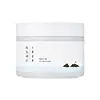What's inside
What's inside
 Key Ingredients
Key Ingredients

 Benefits
Benefits

 Concerns
Concerns

No concerns
 Ingredients Side-by-side
Ingredients Side-by-side

Water
Skin ConditioningGlycerin
HumectantButylene Glycol
HumectantPropanediol
SolventSea Water
HumectantChondrus Crispus Extract
Skin ConditioningSaccharum Officinarum Extract
Moisturising1,2-Hexanediol
Skin ConditioningPanthenol
Skin ConditioningGluconolactone
Skin ConditioningHydroxyacetophenone
AntioxidantSodium Citrate
BufferingGlyceryl Glucoside
HumectantProtease
ExfoliatingBetaine
HumectantTromethamine
BufferingDipotassium Glycyrrhizate
HumectantEthylhexylglycerin
Skin ConditioningAllantoin
Skin ConditioningTocopherol
AntioxidantXanthan Gum
EmulsifyingDisodium EDTA
Water, Glycerin, Butylene Glycol, Propanediol, Sea Water, Chondrus Crispus Extract, Saccharum Officinarum Extract, 1,2-Hexanediol, Panthenol, Gluconolactone, Hydroxyacetophenone, Sodium Citrate, Glyceryl Glucoside, Protease, Betaine, Tromethamine, Dipotassium Glycyrrhizate, Ethylhexylglycerin, Allantoin, Tocopherol, Xanthan Gum, Disodium EDTA
Water
Skin ConditioningGlycerin
HumectantSodium Cocoyl Alaninate
Lauryl Hydroxysultaine
CleansingDisodium Cocoamphodiacetate
CleansingSodium Methyl Cocoyl Taurate
CleansingAcrylates/C10-30 Alkyl Acrylate Crosspolymer
Emulsion StabilisingBetula Platyphylla Japonica Juice
Skin ConditioningButylene Glycol
HumectantSodium Hyaluronate
HumectantHyaluronic Acid
HumectantSodium Chloride
MaskingGlyceryl Glucoside
HumectantAscorbic Acid
Antioxidant1,2-Hexanediol
Skin ConditioningArtemisia Annua Extract
MaskingChamomilla Recutita Flower Oil
MaskingPinus Sylvestris Leaf Oil
MaskingQuillaja Saponaria Bark Extract
CleansingCaprylyl Glycol
EmollientCoco-Glucoside
CleansingGlyceryl Caprylate
EmollientSodium Cocoyl Isethionate
CleansingHexylene Glycol
EmulsifyingCitric Acid
BufferingDisodium EDTA
Water, Glycerin, Sodium Cocoyl Alaninate, Lauryl Hydroxysultaine, Disodium Cocoamphodiacetate, Sodium Methyl Cocoyl Taurate, Acrylates/C10-30 Alkyl Acrylate Crosspolymer, Betula Platyphylla Japonica Juice, Butylene Glycol, Sodium Hyaluronate, Hyaluronic Acid, Sodium Chloride, Glyceryl Glucoside, Ascorbic Acid, 1,2-Hexanediol, Artemisia Annua Extract, Chamomilla Recutita Flower Oil, Pinus Sylvestris Leaf Oil, Quillaja Saponaria Bark Extract, Caprylyl Glycol, Coco-Glucoside, Glyceryl Caprylate, Sodium Cocoyl Isethionate, Hexylene Glycol, Citric Acid, Disodium EDTA
 Reviews
Reviews

Ingredients Explained
These ingredients are found in both products.
Ingredients higher up in an ingredient list are typically present in a larger amount.
1,2-Hexanediol is a synthetic liquid and another multi-functional powerhouse.
It is a:
- Humectant, drawing moisture into the skin
- Emollient, helping to soften skin
- Solvent, dispersing and stabilizing formulas
- Preservative booster, enhancing the antimicrobial activity of other preservatives
Butylene Glycol (or BG) is used within cosmetic products for a few different reasons:
Overall, Butylene Glycol is a safe and well-rounded ingredient that works well with other ingredients.
Though this ingredient works well with most skin types, some people with sensitive skin may experience a reaction such as allergic rashes, closed comedones, or itchiness.
Learn more about Butylene GlycolDisodium EDTA plays a role in making products more stable by aiding other preservatives.
It is a chelating agent, meaning it neutralizes metal ions that may be found in a product.
Disodium EDTA is a salt of edetic acid and is found to be safe in cosmetic ingredients.
Learn more about Disodium EDTAGlycerin is already naturally found in your skin. It helps moisturize and protect your skin.
A study from 2016 found glycerin to be more effective as a humectant than AHAs and hyaluronic acid.
As a humectant, it helps the skin stay hydrated by pulling moisture to your skin. The low molecular weight of glycerin allows it to pull moisture into the deeper layers of your skin.
Hydrated skin improves your skin barrier; Your skin barrier helps protect against irritants and bacteria.
Glycerin has also been found to have antimicrobial and antiviral properties. Due to these properties, glycerin is often used in wound and burn treatments.
In cosmetics, glycerin is usually derived from plants such as soybean or palm. However, it can also be sourced from animals, such as tallow or animal fat.
This ingredient is organic, colorless, odorless, and non-toxic.
Glycerin is the name for this ingredient in American English. British English uses Glycerol/Glycerine.
Learn more about GlycerinGlyceryl Glucoside is made from glycerol and glucose.
It is a humectant. Humectants help hydrate your skin by drawing moisture to it from the air.
Some foods that contain glyceryl glucoside include sake, miso, and wines.
Learn more about Glyceryl GlucosideWater. It's the most common cosmetic ingredient of all. You'll usually see it at the top of ingredient lists, meaning that it makes up the largest part of the product.
So why is it so popular? Water most often acts as a solvent - this means that it helps dissolve other ingredients into the formulation.
You'll also recognize water as that liquid we all need to stay alive. If you see this, drink a glass of water. Stay hydrated!
Learn more about Water